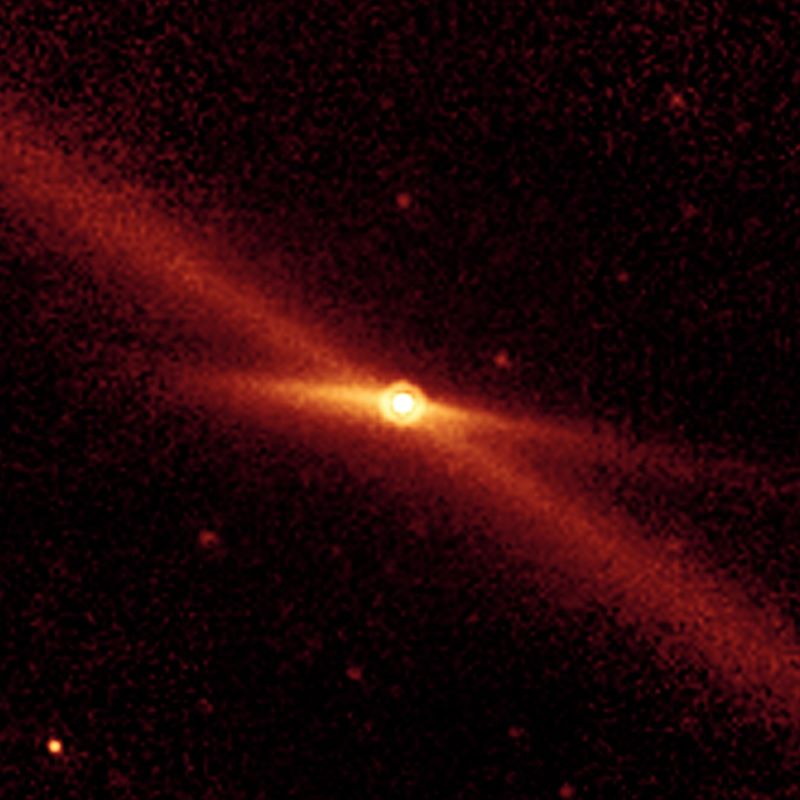
- Every year, Earth plows through icy debris left behind by Comet Encke. These small particles strike Earth and light the sky in an annual meteor shower known as the Taurids.
- Astronomers feared there were larger chunks – perhaps kilometer-sized rocks – in the comet’s orbit, which might also plow into Earth with destructive force.
- But a new study suggests there are fewer large asteroids than once expected, perhaps just nine to 14. They also think Comet Encke itself is about 10 times smaller than they once believed.
The University of Maryland published this original article on October 7, 2024. Edits by EarthSky.
Doomsday asteroid swarm not likely
Astronomers have good news about potentially hazardous asteroids lurking near our planet: there aren’t as many as we thought.
A team of researchers led by the University of Maryland used the Zwicky Transient Facility (ZTF) telescope to survey large expanses of sky. They investigated a stream of space debris known to drift near Earth called the Taurid swarm. The Taurids are likely remnants of a large comet called Encke. They appear from Earth as highly visible meteor showers in October and November. This region has long intrigued astronomers due to its potential for harboring hidden, dangerous asteroids. But researchers could not confirm or disprove the existence of such hazards … until now.
The group announced its findings at the American Astronomical Society’s Division for Planetary Sciences annual meeting on October 8, 2024.
Quanzhi Ye, who supervised the project and is an assistant research scientist in UMD’s Department of Astronomy, said:
We took advantage of a rare opportunity when this swarm of asteroids passed closer to Earth, allowing us to more efficiently search for objects that could pose a threat to our planet. Our findings suggest that the risk of being hit by a large asteroid in the Taurid swarm is much lower than we believed, which is great news for planetary defense.
Large asteroids in the Taurid swarm?
Prior to this study, researchers speculated the Taurid swarm contained a considerable number of large, kilometer-class space rocks. These rocks would’ve been left behind by a large object possibly up to 100 kilometers (62 miles) wide. Large objects can cause regional damage if they were to impact Earth. For example, the Chelyabinsk asteroid that hit Russia in 2013 injured more than 1,600 people. Even larger objects can cause extinction-level events, such as the asteroid that killed the dinosaurs over 66 million years ago.
Ye explained:
Fortunately, we found that it’s likely there may only be a handful of asteroids – perhaps only nine to 14 of them – that fit this large size class in the swarm. Judging from our findings, the parent object that originally created the swarm was probably closer to 10 kilometers in diameter rather than a massive 100-kilometer object. While we still need to be vigilant about asteroid impacts, we can probably sleep better knowing these results.
Important clues to planetary evolution
According to Ye, the Taurid swarm holds important clues about planetary evolution, especially due to its connection to Comet Encke. Encke has the one of the shortest orbital periods (the time it takes to complete one rotation around the sun) of known comets at just 3.3 years. It’s also unusually large and dusty for a short-period comet (orbiting the sun in 200 years or less). Considering all available evidence, scientists believe Encke experienced significant fragmentation in the past. And it may continue to fall apart similarly in the future.
Ye said:
Studying the Taurid swarm helps us understand how small celestial bodies like comets and asteroids form and break apart over time. Our research has implications not just for asteroid detection and planetary defense, but also for our broader understanding of solar system objects.
While the study’s results are reassuring, the team believes that they also underscore the need for ongoing vigilance and improved detection capabilities. Using advanced facilities such as the ZTF telescope, which can efficiently conduct vast sky surveys and track potentially hazardous near-Earth objects, the researchers plan to conduct follow-up observations in the coming years when the Taurid asteroid swarm passes close to Earth again. Ye said:
We have opportunities in 2025 and 2026 to further refine our results. As a result, we’re excited to continue this important work.
Bottom line: Astronomers studying the debris that causes the Taurid meteor shower said it’s unlikely there’s a doomsday asteroid swarm with many large asteroids hidden in the debris.











